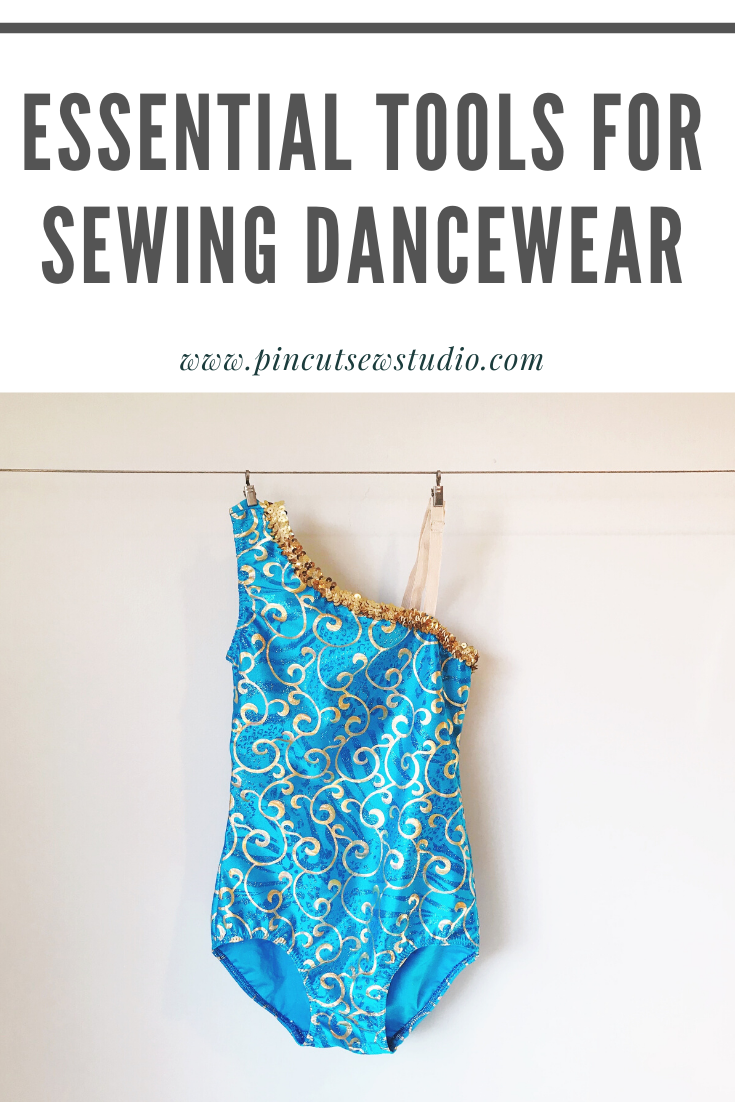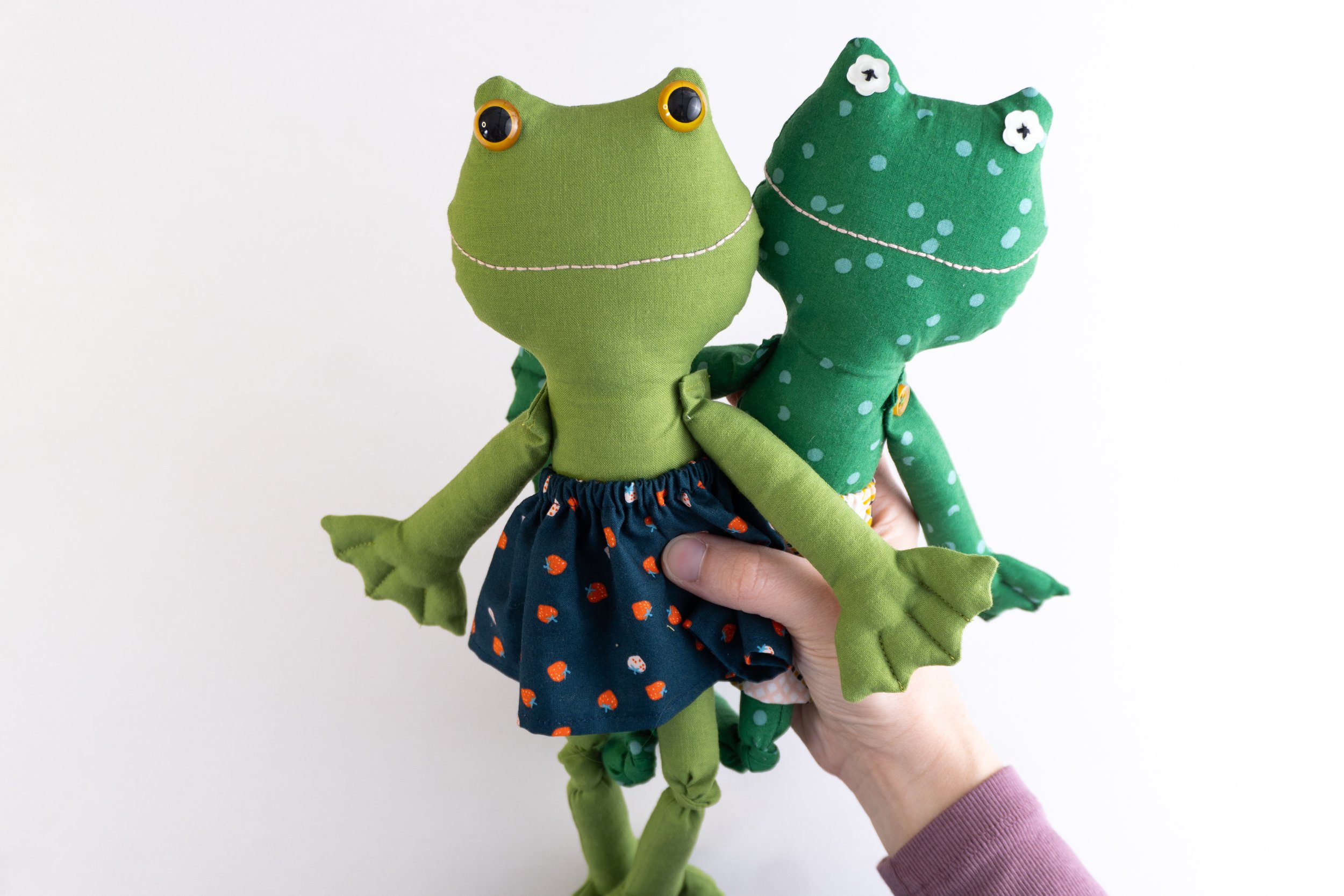The right tools for sewing activewear and dancewear
I’ve written somewhat extensively on sewing dancewear and activewear (including here and here) and as I complete more projects in this sewing genre, I land on more tips, techniques and tools to add to those archives.
This week I was commissioned to make four dance leotards for a dance production of The Grinch and they turned out so great, but I feel like they also forced me to land on the proper products for sewing leotards, for whatever sport or activity. As always, you need the right tools for the job! I’m going to share those essentials today.
This post may contain affiliate links, which means that while I am not paid to promote certain items, I will earn a small commission should you purchase items through these links. For more info, see my disclosure policy.
PIn Me for Later!
Tools for sewing activewear and dancewear
Elastic
I’ve made a few leotards in the recent past and I didn’t really feel like I’d hit on the right elastic for the job. Different bloggers and authors on the topic seem to all have different opinions, some say knit, some say braided, but I’d tried both of those and none gave the right amount of soft stretchiness. This time I obtained some cotton swimsuit elastic and it is perfect! It’s so stretchy, does not get stretched out of shape when you sew it and it’s cotton, so it’s made to withstand water and sweat. Don’t even try to make leotards or swimwear without the swimwear elastic, others just do not function the same.
These costume leotards also needed the straps, for which I bought Dritz ballet elastic. The package contains the exact amount you need to make two adjustable straps. This elastic had the right amount of stretch for straps — too stretchy and it won’t work quite right and could dig into the performer’s shoulder when they try to tighten it.
Hardware
For the adjustable straps, you need the right hardware. These come in various colors, most commonly white, black and clear. Obviously, adjustable straps are optional, but they are nice for costumes that will be used by others in the future. If you don’t have the hardware, make sure you leave enough elastic as a tail so that it can be let out later.
Needles
You need, need, need stretch or ball point needles when sewing elastic and spandex or any stretchy fabric. Rather than puncturing the fibers like a normal needle does, a ball point needle separates the fibers. If you use a regular needle, you’re likely to have skipped stitches and your zig zags will look like a mess. Trust me on this one, and get the proper needles!
A Serger
This is obviously optional, but if you start sewing knits enough, a serger is a game changer. For leotards and activewear especially, the serger finishes those seams lickity split, with more give than your regular machine’s stretch stitch or zig zag stitch. Those stitches will work, of course, but you will have some popped seams occasionally and the results will be obviously less professional. The good new is that a serger doesn’t need to break the bank. I have this Juki serger and have been using it for about six or seven years with ZERO issues. The price is right, too! Next on my list is a coverstitch machine, which, if I continue sewing dancewear on commission, I’ll need to invest in one at some point.
This photo is of my daughter in a Jalie leotard I made for her recently. I have yet to try to sew this style of tutu, but it’s on my list!
Fabrics
Spandex is what you need! Cotton spandex is softer and straight spandex is the slick shiny stuff. Whatever you choose, your fabric must have four-way stretch. That means it stretches equally in all directions, not just stretchy one way. I find ordering these fabrics to be easy from spandexworld.com. I love how well they describe the weight of each fabric and the prices are great, I haven’t been disappointed.
Lining
The flesh colored stuff that comes inside your swimsuits and inside of leotards goes by a few different names, but you can usually find it by searching for swimsuit lining. Or on spandexworld, here is the selection of linings. It’s flesh colored and comes in various weights, some with compression, which is great when sewing leotards for teens and adults. Many dancers do not wear bras with leotards and need the compression of the right lining in order to feel secure.
Patterns
I’ve written an entire post on finding patterns for all kinds of dancewear, but my go-to for leotards of all kinds, is hands down, Jalie.com. For these Grinch costumes, I used the basic leotard pattern and it was so easy to convert it to a one-shouldered design. Most importantly, their size chart is super accurate, so you won’t waste time trying to figure out the right size.
That’s my advice concerning tools for sewing activewear! Specialty sewing like dancewear can be super intimidating for some, but I hope if you’re interested in it, you’ll give it a try. It’s really not scary at all with the right arsenal of tools and techniques. There’s no ironing involved, very little pinning once you get the hang of it and seamstresses who can sew it are few and far between, so if you’re wanting to start earning money sewing, consider specializing in sewing for dance, gymnastics, drill teams, etc ... There seems to be a giant shortage of qualified sewists in this genre, based on the amount of requests I’ve gotten this month alone. I charge $30 per hour plus supplies and no one has even batted an eye at my price, which feels so validating! So find yourself some spandex and give it a whirl ;)













Take the risk factor out of buying fabric online with my tips and shopping sources!